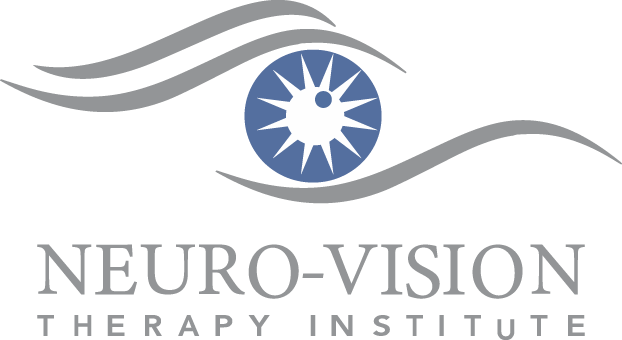Brain injuries encompass many types of head trauma including traumatic brain injury (TBI), stroke, or neurological conditions such as multiple sclerosis, Parkinson’s Disease, and more. Similar to concussions, more severe traumatic brain injuries result in diffuse brain injuries that impact the entire brain with inflammation and swelling. Because visual pathways travel throughout 35 areas of the brain, they are highly susceptible to damage or post traumatic vision syndrome. As a result, individuals often experience difficulty with daily activities and a multitude of symptoms.
A stroke can result in visual field loss, eye tracking deficits, and/or visual processing disorder. The loss of these essential visual processes has a deleterious effect on memory, attention, organization skills, and more.
Individuals with neurological conditions such as multiple sclerosis, Parkinson’s Disease, and more, are much more likely to suffer from a vision condition or post traumatic vision syndrome due to their neurological disruption. They may experience double vision, poor eye movement ability, and visual processing disorders.
Each of these types of brain injuries benefit from a Neuro-Vision Evaluation in order to fully understand how the brain condition could be impacting visual performance. Vision rehabilitation and specialized lenses are the best line of treatment for a vision condition caused by a brain injury. Sometimes people with brain injuries struggle in other areas, so we may recommend other therapeutic programs that support comprehensive head trauma recovery.
What are most common vision symptoms of a brain injury?
- Double Vision
- Loss of Visual Field (unable to see to the right or left)
- Balance and/or Spatial Disorders (inaccurate judgement of visual space relative to the body)
- Visual Information Processing Dysfunction
If you or a loved one experience any of the above symptoms, a Neuro-Vision Evaluation conducted by a Neuro Optometrist is the only means of getting a clear and accurate diagnosis. If you’re interested in better understanding the seriousness and severity of the symptoms you or a loved one are experiencing, we encourage you to take our Vision Symptom Quiz.
What causes post traumatic vision syndrome?
Visual pathways of the brain are susceptible to traumatic brain injury. These pathways are responsible for maintaining clear, comfortable, binocular vision throughout the day, and disruption in these pathways can lead to reduced performance and severe symptoms in daily activities. Other types of brain injury, such as a stroke, multiple sclerosis, Parkinson’s Disease, and more cause vision problems as well.
How is post-traumatic vision syndrome treated?
Vision rehabilitation is the best treatment for post-traumatic vision issues. Vision rehabilitation addresses the root of the problem, which is a disruption in the visual brain pathways. Through advanced vision techniques, repetition, and learning, these visual pathways can recover, become faster and more accurate, allowing for vision to support activities rather than disrupt them.
In addition to utilizing the active vision therapy techniques in vision rehabilitation, our doctors incorporate syntonics (or color light therapy), meditation practice, and breath work to help calm the ups and downs that many people with post-traumatic vision syndrome experience. We have found this approach also helps to integrate newly-learned visual skills more quickly.
Treatment often also includes specialized lens prescriptions, lifestyle recommendations, proper nutrition and supplementation, and other therapeutic programs that support comprehensive recovery.
References
Ciuffreda KJ, Ludlam, Kapoor N. Clinical oculomotor training in traumatic brain injury. Optom Vis Dev 2009;40(1):16-23.
Craig S, Kapoor N, et al. Profile of Selected Aspects of Visually Symptomatic Individuals With Acquired Brain Injury: A Retrospective Study. J Behav Optom 2008;19:1-10.
Ciuffreda KJ, Kapoor N, Han Y. Reading-related ocular motor deficits in traumatic brain injury. Brain Inj/Professional 2005;2:16-20.
Ciuffreda KJ, Kapoor N, Rutner D. Occurrence of oculomotor dysfunctions in acquired brain injury: A retrospective analysis. Optometry 2007;78:155-61.
Ciuffreda KJ, Kapoor N. Vision Disturbances Following Traumatic Brain Injury. Current Treatment Options in Neurology 2002;4:271-80.
Suchoff I, Han E, Craig S, Rutner,D, Kapoor N, Ciuffreda K. The Frequency of Occurrence, types and Characteristics of Visual Field Defects in Brain Injury: A Retrospective Analysis. J Am Optom Assoc 5/2008;79: 259-256.
Maino D. Neuroplasticity: Teaching an old brain new tricks. Rev Optom, 2009; 46(1):62-64,66-70.

